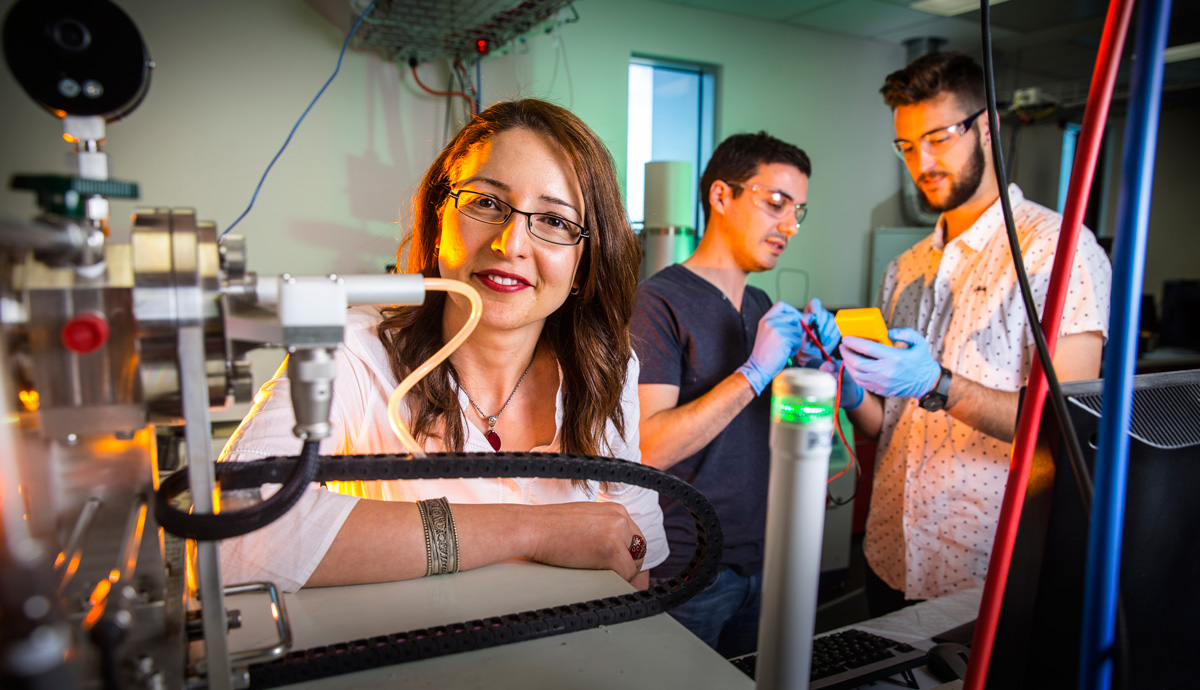September 7, 2015
Waste heat to power future energy needs
Turning waste heat from everyday sources into electrical energy could provide sustainable power.
Researchers at UOW’s Institute for Superconducting and Electronic Materials (ISEM) have made a breakthrough in the chemical composition of a material used in the conversion process to greatly enhance the efficiency of capturing energy from waste heat.
Up to two-thirds of the energy used by machines that power our world - from car engines to power stations - is wasted in the form of heat.
Capturing that heat and converting it to electrical energy has recently inspired the development of thermoelectric devices, which use the temperature difference between two surfaces to generate electricity.
Although, thermoelectric generators have been used for quite some time in space-based and other niche applications, their high price and relatively low conversion efficiency have limited their widespread application.
| What is thermoelectric power? |
|---|
Thermoelectric generation involves taking a temperature difference between two surfaces and converting it to electrical energy. The concept is based on the Seebeck Effect, named after German physicist Thomas J Seebeck, who first discovered the phenomenon in 1821. He discovered that heating one side of two dissimilar materials produces a magnetic field. French physicist Jean Peltier in 1834 discovered that when current is passed through a circuit heat is absorbed at one end of the junction and released at the other. The temperature difference between two conducting surfaces produces electricity; the greater the temperature difference, the more electricity is generated. Thermoelectric devices emerged in the 1960s and have been used to generate power on space shuttles. |
The key challenge for this seemingly simple way to increase energy supply is to control two properties that typically change in step, in opposite directions: the material used to convert heat to electricity needs to be highly electrically conductive, but a poor thermal conductor to prevent its temperature equalising.
Researchers at ISEM, led by Dr Sima Aminorroaya Yamini, have successfully developed and tested a new compound that is 25 per cent more efficient than existing commercially available materials.
To accomplish this improvement they modified the existing material to enable use of cheaper and more abundant chemical elements.
Knowledge obtained from the results has provided an insight into the science involved, which can now be used to develop other environmentally friendly, cheaper and more efficient materials.
Approaches to sustainable energy can take two paths: replacing traditional large-scale generation with methods such as hydroelectric, solar, wind and geothermal; or focus on developing small-scale technologies to exploit existing energy sources and improving efficiency.
“Waste heat recovery for thermoelectric power is one example,” Dr Aminorroaya said. “All power generators create waste heat and if even a small fraction of this waste heat could be captured and converted into electricity, significant financial and environmental savings would be possible.
“The development of high performance thermoelectric materials opens up the possibility of these heat-to-power generators becoming standard on everything from the family car to large industrial systems. In our work we set out to improve the efficiency of the material and to replace elements in that composition with cheaper and less toxic components.”
The material, developed in collaboration with the California Institute of Technology, USA, and Tongji University, China, altered the nanoscale structure of alloyed metals and added various compounds to fine-tune its thermoelectric performance.
“One great part of this material is that it can operate at high efficiency over a wide temperature range and up to 600 degrees Celsius. This can greatly improve the efficiency of generators,” DECRA Fellow Dr Aminorroaya said. “The performance did not degrade with time at temperature, which is a major problem often afflicting thermoelectric materials.
"Temperature is not always constant so we need to be able to capture and convert energy efficiently over a wide range of temperatures. This work is still at an early stage, but the results obtained to date validate the experimental approach and provide a strong indication that thermoelectric materials with even better performance are just around the corner.”
The research was recently published in the journal Advanced Energy Materials.
